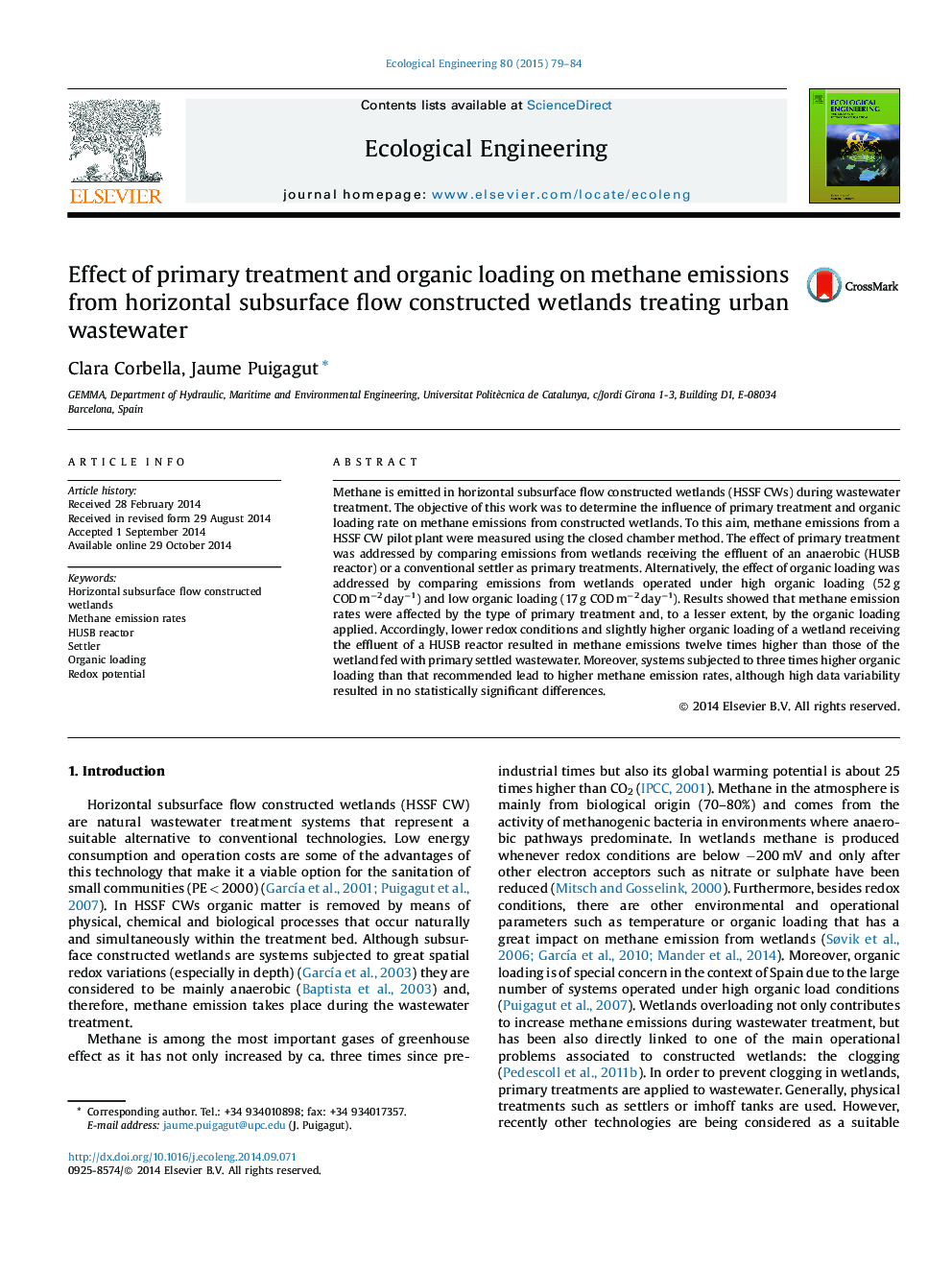| Article ID | Journal | Published Year | Pages | File Type |
|---|---|---|---|---|
| 4389032 | Ecological Engineering | 2015 | 6 Pages |
•Redox status in constructed wetlands was affected by the type of primary treatment.•Redox status in constructed wetlands was affected by organic loading applied.•Organic loading affected ammonia removal.•Methane emission rates depend on the type of primary treatment and organic loading.
Methane is emitted in horizontal subsurface flow constructed wetlands (HSSF CWs) during wastewater treatment. The objective of this work was to determine the influence of primary treatment and organic loading rate on methane emissions from constructed wetlands. To this aim, methane emissions from a HSSF CW pilot plant were measured using the closed chamber method. The effect of primary treatment was addressed by comparing emissions from wetlands receiving the effluent of an anaerobic (HUSB reactor) or a conventional settler as primary treatments. Alternatively, the effect of organic loading was addressed by comparing emissions from wetlands operated under high organic loading (52 g COD m−2 day−1) and low organic loading (17 g COD m−2 day−1). Results showed that methane emission rates were affected by the type of primary treatment and, to a lesser extent, by the organic loading applied. Accordingly, lower redox conditions and slightly higher organic loading of a wetland receiving the effluent of a HUSB reactor resulted in methane emissions twelve times higher than those of the wetland fed with primary settled wastewater. Moreover, systems subjected to three times higher organic loading than that recommended lead to higher methane emission rates, although high data variability resulted in no statistically significant differences.
